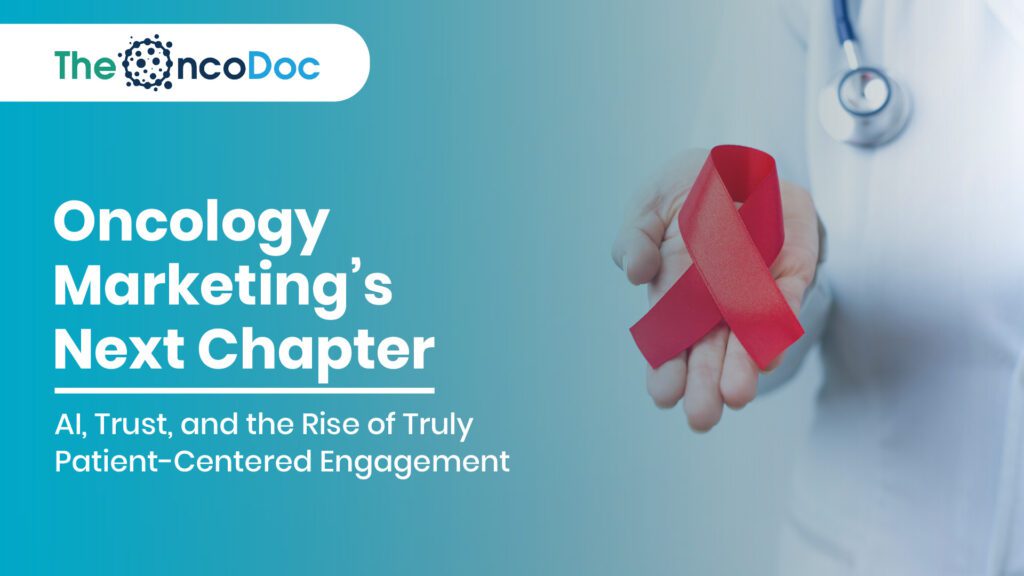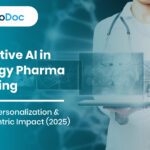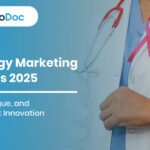Introduction: Oncology Marketing in the Age of Intelligent Transformation
Oncology marketing stands at a pivotal moment. Unlike other therapeutic areas, cancer care is deeply emotional, data-intensive, and rapidly evolving with scientific breakthroughs. Patients, oncologists, caregivers, and governments are all seeking not only effective treatments but also trustworthy information, personalized engagement, and supportive ecosystems.
The convergence of artificial intelligence (AI), precision medicine, and digital-first engagement models is reshaping how pharmaceutical companies communicate, educate, and build trust. Campaigns today are not just about market share, they are about earlier detection, timely diagnosis, holistic survivorship support, and equity in cancer care.
This article explores emerging strategies and AI-powered innovations that will redefine oncology pharma marketing beyond 2025.
1. Patient Empowerment Through AI-First Campaigns
Traditional pharma marketing relied heavily on physician outreach. But oncology has transformed into a patient-first decision-making ecosystem, where patients research, compare, and often influence therapy choices before their oncologist prescribes.
AI is now being used to personalize patient awareness campaigns:
- Predictive content delivery: AI analyzes search patterns like “persistent cough,” “breast lump,” or “unexplained weight loss,” pushing tailored awareness content before patients even consider visiting a doctor.
- Adaptive storytelling: Campaigns change dynamically, if a caregiver consumes content on nutrition during chemotherapy, the system pivots to provide evidence-based recovery content.
- Emotional AI: Campaigns are optimized based on emotional resonance, ensuring that fear-based messaging is replaced with hope-driven narratives.
This marks a paradigm shift where marketing becomes a health intervention, not just a communication exercise.
2. AI-Powered Market Segmentation and Precision Outreach
Cancer types vary significantly by region, lifestyle, and socioeconomic conditions. AI-driven analytics now segment audiences not just by geography but by risk clusters, behavioral patterns, and digital engagement signals.
For example:
- In rural India, AI detects rising oral cancer prevalence linked to tobacco chewing, prompting vernacular WhatsApp campaigns.
- In metropolitan areas, breast and lung cancer awareness campaigns are tailored to working professionals with AI-curated LinkedIn ads and personalized screening reminders.
Messages are delivered to the correct patient through the right channel at the right time thanks to this degree of precision marketing.
3. GP and Primary Care Integration for Early Detection
General practitioners remain the first line of defense in oncology. However, delays in referral remain a persistent challenge. Pharma marketing tactics powered by AI are bridging this gap by:
· Offering AI-powered CME modules on mobile apps, designed to refresh GP oncology knowledge in minutes.
- Delivering chatbot-based decision support, guiding doctors with instant referral protocols.
- Building micro-targeted referral campaigns, reminding GPs in high-risk districts about local screening programs.
This integration strengthens the pharma-GP-patient triad, accelerating early detection.
4. Hyperlocal and Vernacular AI Campaigns
Cultural context is critical in oncology awareness. Campaigns in more than 20 Indian languages and dialects are now possible thanks to AI-powered natural language processing (NLP), with emotive tones tailored to regional sensibilities.
- Local narrative formats and AI-powered radio advertisements raise awareness of breast cancer in Tamil Nadu.
- In Uttar Pradesh, conversational AI chatbots in Hindi guide users through oral cancer risk assessments.
- AI customizes ads in Northeast India with digital videos inspired by folk performances.
This hyperlocal approach ensures inclusion and trust across socio-cultural boundaries.
5. Emotional Storytelling Enhanced with AI
Cancer is an emotional journey in addition to a bodily one. Survivor stories have always been impactful, but now AI optimizes them for maximum resonance.
- AI sentiment analysis identifies which narratives (fear, resilience, humor, hope) drive the most engagement.
- Compared to generic advertisements, campaigns using survivor voices can increase engagement by up to 50%.
- Survivor clubs, supported by pharma, are increasingly becoming grassroots influencers, organizing local events and digital campaigns.
Here, AI amplifies what humans do best, connect emotionally.
6. The New KPIs: Measuring Health, Not Clicks
Oncology marketing can no longer be measured by digital vanity metrics. Pharma companies now align success with public health outcomes.
Key KPIs include:
- Screenings booked through campaigns.
- Referral-to-diagnosis time reduced.
- Engagement in survivorship communities.
- Improved adherence to treatment protocols.
These KPIs make pharma marketing a partner in health outcomes, not just an awareness driver.
7. AI-Driven Social Listening and Myth-Busting
Misinformation is a growing threat in oncology, from “miracle herbal cures” to vaccine-related cancer myths. AI-powered social listening platforms detect false narratives in real time and:
- Trigger verified counter-campaigns by oncologists.
- Deploy rapid fact-checking ads across digital platforms.
- Adjust campaign messaging to address emotional fears instead of just correcting facts.
This proactive approach safeguards trust and scientific credibility.
8. Gamification and AI-Powered Engagement Tools
Gamification is becoming central in preventive oncology awareness. AI enhances it by:
- Offering personalized cancer risk quizzes where users earn “health points.”
- Creating district-level screening challenges, with communities competing for the highest participation.
- Rewarding patients with digital health badges, shareable on social media.
Gamification increases screening participation by up to 35%, proving that health engagement can be both fun and impactful.
9. Wearables and Digital Biomarker Integration
Smartwatches and wearables are now powerful allies in cancer prevention and survivorship care. Pharma marketers integrate with these tools to:
- Monitor vitals like sleep, weight, and heart rate, flagging anomalies linked to cancer risks.
- When anomalous patterns are identified, send out targeted cancer awareness nudges.
- Integrate with pharma apps to create a continuous health loop, from awareness to screening to survivorship.
This data-driven personalization ensures proactive cancer care journeys.
10. AI in Predictive Oncology Campaigns
Pharma brands are no longer reactive, they are predictive. AI can now forecast where cancer-related surges may occur, based on search trends, hospital intake patterns, and social chatter.
- Example: If AI detects rising searches for “persistent cough” in a district, campaigns immediately launch lung cancer awareness in that area.
- Predictive alerts are also sent to local GPs, updating them with diagnostic tools for relevant cancers.
Predictive marketing transforms pharma into a real-time public health partner.
11. Virtual Communities and Patient Support Ecosystems
Pharma companies are increasingly creating digital-first support communities for cancer patients, survivors, and caregivers. These spaces provide:
· Interactive webinars led by oncologists to discuss treatment options and recovery support.
· Community-driven forums where patients exchange experiences and practical coping methods.
· Comprehensive resources covering diet, mental health, and lifestyle management for overall well-being.
Such ecosystems go beyond information-sharing, they become safe, trusted networks that reduce isolation and anxiety. At the same time, they serve as valuable feedback channels, giving pharma deeper insights into real-world challenges and unmet needs, enabling campaigns to be more patient-centered and empathetically designed.
12. Voice-First Oncology Marketing
With the rise of smart speakers and IVR, oncology campaigns are moving voice-first:
- Voice-based WhatsApp chatbots answering FAQs in vernacular languages.
- IVR helplines guiding rural patients to nearby diagnostic centers.
- Smart speaker campaigns in community centers delivering awareness sessions.
Voice campaigns bridge literacy gaps and expand outreach into rural and low-literacy populations.
13. AR/VR for Patient and Doctor Education
Immersive technologies are becoming mainstream in oncology engagement.
- Patients experience 3D simulations explaining how immunotherapy works, reducing treatment anxiety.
- Doctors use VR platforms for hands-on rare cancer surgery simulations, supported by pharma-sponsored CME programs.
With this immersive approach, complicated oncology becomes relatable and comforting.
14. Sentiment Analytics for Continuous Optimization
AI-powered emotional analytics ensures campaigns remain emotionally intelligent.
- Positive messaging is amplified if patients express hope and empowerment.
- If campaigns spark fear or confusion, messaging is instantly re-tuned.
This feedback loop ensures oncology pharma marketing is empathetic, responsive, and human-centric.
15. Future Outlook: Blending AI Innovation with Human Empathy in Pharma
The oncology marketing of tomorrow will not be defined by ads or clicks, but by life-years saved, stigma reduced, and survivors empowered.
Emerging trends point toward:
- Digital twins of patients, enabling simulation of tailored therapies.
- Emotionally adaptive campaigns, where AI not only listens but feels.
- Preventive-first marketing models, where the goal is to reduce incidence, not just promote treatments.
The future belongs to pharma companies that blend intelligence with empathy, building marketing systems that are as compassionate as they are data-driven.
16. AI-Powered Clinical Trial Awareness and Recruitment
Oncology innovation depends heavily on clinical trials, yet patient recruitment is still a significant barrier. Globally, less than 5% of cancer patients participate in clinical trials due to low awareness, mistrust, and complex eligibility criteria.
Pharma companies are now deploying AI-driven recruitment platforms to transform this space:
- Eligibility Matching: AI scans electronic medical records (EMRs) and wearable data to identify patients who may fit trial criteria.
- Personalized Outreach: Instead of generic recruitment ads, patients receive tailored communication explaining benefits, risks, and trial logistics in simple language.
- Trust-Building Narratives: Survivor testimonials from past trial participants are used as storytelling assets, making trials less intimidating.
This AI-assisted recruitment is not just a marketing win, it accelerates drug development while giving patients early access to cutting-edge therapies.
17. Equity-Focused AI Marketing for Underserved Communities
Cancer care inequity is a global challenge, rural populations, lower-income groups, and minority communities often face delayed diagnoses and limited treatment options. Pharma marketing in 2025 must go beyond awareness to equity-driven engagement strategies.
Emerging approaches include:
- AI Heatmaps: Identifying “cancer care deserts” with limited oncologist density and targeting those areas with mobile screening vans and AI-driven campaigns.
- Community-Led Campaigns: Collaborating with local NGOs and survivor clubs to co-create culturally resonant messages.
- Financial Navigation Bots: AI chatbots now guide patients through government schemes, insurance policies, and pharma assistance programs, making treatment more accessible.
By focusing on who is left behind, pharma brands evolve from being sellers of therapies to champions of cancer equity.
18. Digital Twins for Personalized Marketing Pathways
Once limited to engineering, digital twin technology is now being used in healthcare. Digital patient avatars are being utilized in oncology marketing to model awareness, treatment plans, and survivor experiences.
- Predictive Personalization: A digital twin of a 45-year-old smoker can simulate how messaging about oral cancer resonates differently compared to lung cancer awareness.
- Risk Scenario Testing: Campaigns can be run on digital twin cohorts before actual launch, predicting emotional response and optimizing tone.
- Adaptive Education: Patients can interact with their own digital twin in an app, visualizing lifestyle impacts on cancer risk.
This approach makes pharma marketing hyper-personalized, low-risk, and deeply engaging, combining science with storytelling.
19. Sustainability and Green Marketing in Oncology
Sustainability is emerging as a new trust driver in healthcare marketing. Patients and doctors alike are increasingly conscious of the environmental footprint of pharma campaigns. Oncology marketing is responding with eco-conscious strategies:
- Digital-First Campaigns: Replacing printed brochures with AI-personalized e-guides, reducing paper waste.
- Sustainable Outreach Materials: Where physical campaigns are necessary (like screening camps), pharma uses biodegradable materials.
- Carbon-Neutral Campaigns: Brands are offsetting campaign-related carbon emissions, tying sustainability directly to patient engagement.
This resonates particularly with younger, urban cancer patients and caregivers, who associate sustainability with brand responsibility and authenticity.
20. AI-Driven Post-Survivorship Ecosystems
Survivorship is one of the least addressed stages of oncology care, yet it is critical for long-term quality of life. Pharma marketing is increasingly evolving into post-treatment care ecosystems, supported by AI.
- Symptom Monitoring Apps: AI tracks fatigue, appetite loss, or anxiety post-treatment and delivers personalized self-care guidance.
- Virtual Coaching Programs: Survivors receive AI-coordinated emotional support, nutrition plans, and rehabilitation reminders.
- Community Growth Loops: Survivors become campaign ambassadors, sharing their recovery journeys in vernacular languages and influencing peers.
This shifts oncology pharma marketing from being transactional to lifelong, brands remain relevant long after treatment ends, creating a continuum of trust.
Conclusion: The Next Frontier in Oncology Pharma Marketing
With these additional five dimensions, clinical trial recruitment, equity-driven strategies, digital twins, sustainable campaigns, and survivorship ecosystems, oncology pharma marketing is entering a new era. AI is not just powering personalization; it is reshaping access, empathy, and trust across the entire cancer journey.
The ultimate success metric will not be measured in prescriptions or revenue alone but in:
- How many patients join trials early,
- How underserved populations are included,
- How campaigns reduce environmental impact, and
- How survivors feel supported for life.
In this future, the pharma marketer becomes not a promoter, but a partner in survival, resilience, and equity.
The Oncodoc team is a group of passionate healthcare and marketing professionals dedicated to delivering accurate, engaging, and impactful content. With expertise across medical research, digital strategy, and clinical communication, the team focuses on empowering healthcare professionals and patients alike. Through evidence-based insights and innovative storytelling, Hidoc aims to bridge the gap between medicine and digital engagement, promoting wellness and informed decision-making.



